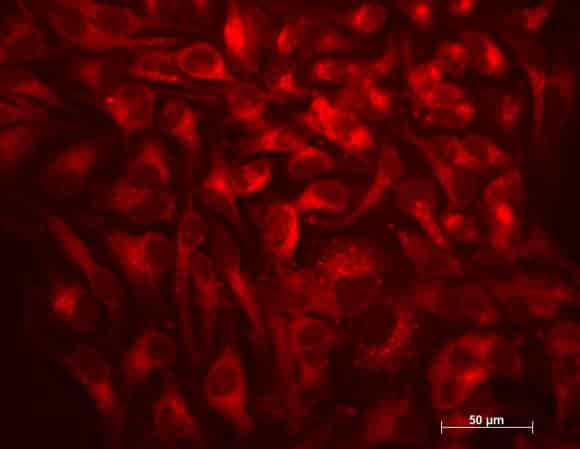Enhanced Autophagy for Promising Therapies for Age-Related Diseases
Autophagy is a conserved cellular mechanism required for longevity across phyla. Autophagy consists of the bulk sequestration of intracellular material into a vesicle called the autophagosome, which eventually fuses to the lysosome for degradation.
Several different age-related diseases, including neurodegenerative diseases, are characterized by autophagic and lysosomal dysfunctions, which result in the accumulation of unprocessed autophagosomes, aberrant organelles, and aggregates.
Therefore, to prevent the onset of these age-related diseases, the search for new pharmacological modulators of autophagy is imperative. Now, Brown University researchers have found a new way to stimulate autophagy that could lea
d to future therapies for age-related diseases.“Autophagy dysfunction is present across a range of age-related diseases including neurodegeneration,” said Louis Lapierre, an assistant professor of molecular biology, cell biology and biochemistry at Brown who led the work. “We and others think that by learning how to influence this process pharmacologically, we might be able to affect the progression of these diseases. What we’ve shown here is a new and conserved entry point for stimulating autophagy.”
Autophagy is the process by which cells recycle their spare parts and involves rounding up of misfolded proteins and obsolete organelles within a cell into vesicles called autophagosomes. The autophagosomes subsequently fuse with a lysosome, an enzyme-containing organelle that breaks those down mobile macromolecules and transforms it to parts that the cell can decode.
The team wanted to determine whether they could boost autophagy by using a transcription factor (a protein which turns gene expression off and on) that modulates autophagic activity. For your transcription factor to change autophagic action on, it ought to be localized in the nucleus of a cell phone. Thus Lapierre and his group screened in nuclei, for genes which improve the transcription factor, called TFEB’s degree.
Utilizing C. elegans, the screening displayed that reducing the term of a protein known as XPO1, which transfers proteins from the nucleus, results in nuclear accumulation of the nematode edition of TFEB. That accumulation was correlated with an increase in markers of autophagy, such as improved autophagosome, autolysosomes in addition to raised lysosome biogenesis.
“What we showed was that by blocking the escape of this transcription factor from the nucleus, we could not only influence autophagy but we could get an increase in lifespan as well,” Lapierre said.
The following step was to see whether there were drugs which may mimic the effect of this gene inhibition employed from the screening test. The researchers found that selective inhibitors of nuclear export (SINE), initially designed to inhibit XPO1 to deal with cancers, had a similar impact- raising markers of autophagy and considerably increasing lifespan in nematodes.
The researchers then analyzed SINE on a genetically modified fruit fly which functions as a model organism to the neurodegenerative disease ALS. These experiments demonstrated a small but important gain in the lifespans of those treated flies. “Our information indicates that these chemicals may relieve a number of these neurodegeneration in these types of flies,” Lapierre said.
“Our study tells us that the regulation of the intracellular partitioning of TFEB is conserved from nematodes to humans and that SINE could stimulate autophagy in humans,” Lapierre said. “SINE have been recently shown in clinical trials for cancer to be tolerated, so the potential for using SINE to treat other age-related diseases is there.”






























